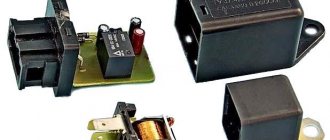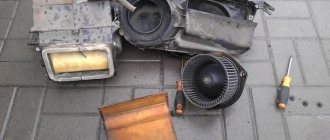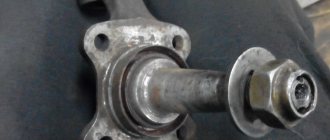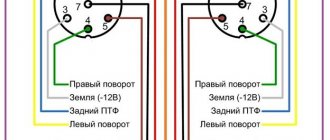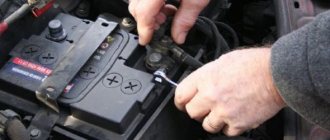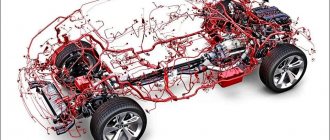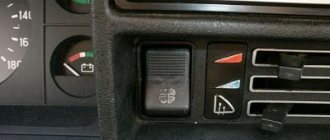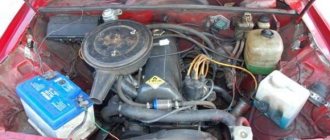Video: General structure of a passenger car in 3D. How does a car work? The structure of a car engine. Internal combustion engine (ICE) in 3D. General structure of a truck. Electrical equipment of a car: structure and main malfunctions
Nowadays, a car is no longer a luxury. Almost everyone can afford to buy it. But often very few people are familiar with the structure of a car, although it is very important for every driver to know what main parts, components and assemblies the vehicle consists of. First of all, this is necessary when some kind of car breakdown occurs, due to the fact that the owner is at least generally familiar with the design of the car, he can determine exactly where the malfunction occurred. There are a huge number of different brands and models of cars, but for the most part, all passenger cars have the same design. Let's analyze the structure of a passenger car.
Suspension
Windshield
Salon
Fuel system
Body
Transmission
Engine
Wheels and tires
Headlights
A passenger car consists of 5 main parts:
- body (supporting structure)
- chassis
- transmission
- internal combustion engine (gasoline or diesel)
- engine management system and electrical equipment
Frame and body
Like a person, a machine has its own skeleton - a frame. All hanging systems and elements are supported on it. It is more correct to call it a skeleton or supporting system. It, in turn, can be framed or frameless, frame-body. The main purpose of the frame is to fasten and hold all the main components and systems of the car, and to absorb loads when driving.
The frame structure of the car is based on a rigid rod structure - the frame. All the main components of the car are attached to it, including the body itself. A similar design is typical for tractors, trucks and some large SUVs. The frame must be very durable, but at the same time light and technologically advanced.
The main parts of such a chassis are two or more (depending on the design of the car) longitudinally located beams connected by cross members. These are the spars that so often arouse the interest of beginners. The most widespread are riveted frames, which are simple to manufacture and more technologically advanced. On the other hand, they are not suitable for heavy vehicles. Here it is more advisable to use all-welded frames. And in small-scale production of some cars, a bolted connection is used. The body itself is attached to the frame using special bolted brackets with thick rubber gaskets that reduce vibrations.
The frameless body itself is a support, a load-bearing component. It is much more difficult to manufacture, maintain and repair it. Despite this, they replaced frames and began to be widely used in the creation of modern passenger cars. Primarily due to lower weight and excellent stability due to the low center of gravity. In addition, the frameless design is better than all other systems in terms of safety. The world's first car with such a system was the 1922 Lancia Lambda.
The load-bearing body is often compared to an egg shell. As you know, it is very difficult to break it longitudinally, since all the force is not concentrated in one place, but is dispersed over the entire area. So, the entirely frameless or frame-supporting structure of the car, consisting of many panels welded together, forms a strong single structure. It is noteworthy that even the glass of such a body takes a certain part of the load and affects the overall rigidity.
It is customary to distinguish bodies according to their main types. For example, passenger cars come in the form of a sedan, hatchback or station wagon. There are other varieties, but they are not as common. The most popular is the sedan, which is structurally divided into three parts: the engine compartment, the interior and the trunk. But the hatchback does not have a separate luggage compartment. The latter is connected to the salon, which causes certain inconvenience. But the hatchback is more compact and lighter than the sedan, which has a positive effect on fuel consumption and maneuverability. The station wagon is designed for high loads and is equipped with a huge trunk. All modern SUVs have this body.
The body is made of high-strength steel, which goes through several stages of processing. As a rule, they try to use thin sheets of metal to reduce the overall weight of the car.
The panels are attached to each other by spot welding. This is the best fastening technology so far, as it is reliable and allows you to reduce the number of edges and sharp corners that are most sensitive to rust.
The car body consists of:
- areas of the motor and additional systems with cross members and front side members;
- passenger compartment or cabin with bottom, thresholds, pillars and side members;
- trunk with rear panel and wings.
Rigidity
Rigidity is the property of a car body to resist dynamic and static loads during operation. It directly affects handling.
The higher the stiffness, the better the car's handling.
Rigidity depends on the body type, overall geometry, number of doors, car size and windows. The fastening and position of the windshield and rear windows also plays an important role. They can increase stiffness by 20-40%. To further increase rigidity, various reinforcement struts are installed.
Hatchbacks, coupes and sedans are considered the most stable. Typically, this is a three-volume layout that has additional partitions between the luggage compartment and the engine. Insufficient rigidity is shown by station wagon, passenger, and minibus bodies.
There are two stiffness parameters - bending and torsion. For torsion, resistance is checked under pressure at opposite points relative to its longitudinal axis, for example, when hanging diagonally. As already mentioned, modern cars have a solid monocoque body. In such structures, rigidity is provided mainly by side members, transverse and longitudinal beams.
Engine
It is impossible to imagine the structure of a car without the main source of mechanical energy that sets it in motion. So far, internal combustion engines are the most common, although they are gradually being replaced by hybrid and electric varieties.
Each internal combustion engine has cylinders and pistons. They convert the thermal energy released during fuel combustion. This process is repeated several hundred times per minute to ensure continuous and rapid rotation of the crankshaft. The latter transmits torque further, directly to the wheel drives.
Four-stroke engines are the most common. They are named so because of the 4 main processes or strokes that occur in the cylinders during one stroke of the piston. First, the fuel-air mixture is admitted into the combustion chamber, then the fuel is compressed, then ignited by supplying a spark with a spark plug and exhaust gases are released. During these four strokes, a power stroke or torque is generated, transmitted through the connecting rod to the crankshaft.
Types of engines and their differences
All piston internal combustion engines differ in the type of injection. Not so long ago, carburetor ignition types were also popular, but they gave way to injection or fuel injection systems.
In the design of a car for dummies, injection engines are classified according to the type of injection in a simplified manner:
- monoinjection or monoinjector - only one common nozzle is used for all cylinders;
- distributed injection - each engine cylinder has a separate nozzle;
- direct injection - fuel and air are supplied into the chamber separately, and the injectors are not placed above the intake valves, but directly in the cylinders.
Power plants are usually distinguished by type of power supply:
- gasoline;
- diesel
By layout:
- in-line - all cylinders (4 or 6 in number) are located on the same line;
- V-shaped - cylinders (number 4, 6 or
 located in two planes;
located in two planes; - Opposed - with opposite arrangement of cylinders and pistons.
VR type engines (Mitsubishi Galant) are also known, a feature of which is a small camber angle. This engine is smaller in length and width than a conventional V-6 or V-8. Another rare internal combustion unit is the W12. Here the cylinders are arranged in three rows at once.
In addition to piston engines, other types of units are gradually coming into fashion today:
- rotary on gasoline - here there are no pistons in the cylinders, and the main element is a rotor rotating along a given path;
- hybrid - combines piston and electric motors, works on the principle of saving fuel.
How to learn to understand cars, including girls
Before a beginner gets on the road, he should get a license. To do this, he needs to complete a driving course. Among the many driving schools, we recommend choosing those that will provide initial information about the structure of the car and the principles of its operation. Naturally, in order to understand what the instructor is talking about, you need some knowledge of technology.
It would be a good idea to buy books and manuals about how to build a car in a store or find books on the Internet. They are divided into two types. The first ones talk about the principle of operation of the car as a whole.
Others pay attention to the description of a specific car model
By learning to correctly identify the types of car, you can choose the car that suits you best.
When buying your first car, it is important to talk to acquaintances and friends who already have driving experience. You can take them with you to the store or car market.
At the same time, you should remember the tips you receive, as they will be useful in the future.
How to choose the right first car:
To gain new knowledge, it is also useful to look at automobile magazines and special thematic forums on the Internet from time to time. From glossy publications you can learn about new products on the automotive market. Also there you can often find practical advice from car enthusiasts on how to get out of this or that difficult situation. On forums you can make useful acquaintances with colleagues.
Transmission
The link between the engine and the wheels is called the transmission. This indispensable conductor performs several functions in the car:
- transmits torque to the drive axle;
- changes the rotation and distributes it among the wheels.
Modern transmissions come in different types: classic, electric, hydrostatic, hybrid. The design includes a driving and dependent axle. There are front-wheel drive, rear-wheel drive or all-wheel drive on all four wheels.
Clutch operating principle
The connecting link between the gearbox and the engine, connecting and disconnecting the gearbox input shaft from the crankshaft flywheel is called a clutch. On a manual transmission, gears shift only when the clutch is depressed.
Clutch assembly design:
- pressure plate or “basket”;
- release bearing drive fork;
- release bearing;
- driven disk;
- drive system;
- clutch release pedal.
According to the number of driven discs, the clutch is divided into single-disc and multi-disc.
In the single-disk version, the basket is connected to the flywheel and rotates with it. All rotation is transmitted to the gearbox, since the driven disk contains a splined clutch into which the gearbox shaft enters. To change gear, the driver presses the pedal, which triggers the following processes:
- pressure is transmitted to the clutch fork through the clutch drive system;
- the fork, in turn, moves the release bearing clutch along with it to the basket springs;
- the bearing exerts pressure on the basket legs;
- the paws temporarily disconnect the disc from the flywheel.
When the driver releases the pedal, the bearing separates from the springs and the basket engages with the flywheel.
In double-disc versions, a basket is used that has two working surfaces and two clutch discs. Restrictive bushings and a synchronous pressure adjustment system are located between the working surfaces of the drive disk. The process of disconnecting the flywheel occurs as in a single-plate clutch.
Types of clutch:
- mechanical;
- hydraulic (the most common option);
- electrical;
- single and multi-disc.
Manual transmission
Mechanism for stepwise change of gear ratio. The speed selection on a manual transmission is carried out manually by the driver of the car. The main functional component of such a box is realized through mechanical devices, which is why it is named so.
There are two-shaft and three-shaft boxes. There is a main, secondary and intermediate shaft. Synchronizers are provided for shock-free and comfortable gear shifting. A sample of a two-shaft gearbox is installed on VAZ 2104, 2105, 2109.
How to learn to understand cars from scratch Detailed
How to learn to understand cars inside, outside and under the hood?
The ability to understand machines is a fairly broad concept. For some, it is enough to distinguish one model from another. The same people whose profession is related to cars put a much broader meaning into this concept:
- body type;
- car class;
- engine type - injection, carburetor, diesel, one- or two-stroke, hybrid, electric car;
- transmission - manual, automatic, variator, robotic, preselective (dual clutch).
If you work, for example, in a company that sells spare parts or in an auto shop, then according to your job description you are simply required to have extensive knowledge:
- thoroughly know the model range of a particular automaker - that is, they must know the difference between various engines, for example VAZ-2104 - VAZ-21073, VAZ-21067, their volume, fuel, features;
- technical features of various units;
- design and device features.
If you have ever had to buy spare parts, then you know that it is enough for a good specialist to show this or that spare part - the brake wheel cylinder, the second gear gear, the main or intermediate shaft of the gearbox, the clutch cable, the release bearing, the feredo disc - he will name them without any problems brand, will tell you what car it is from, and most importantly, will tell you exactly what it is. He will also easily select the part you need from the catalog - from a rubber sealing ring or cuff, to an assembled distributor or gearbox rocker.
It is clear that such a skill comes only with experience. We will try to give basic recommendations on our website Vodi.su.
Automatic transmission
A new type of transmission, which comes in several types:
- classical;
- semi-mechanical DSG;
- robotic;
- CVT.
The automatic transmission allows you to switch gears as smoothly as possible, maintaining the integrity of the clutch for a long time. Due to this, the automatic transmission can adapt to different driving styles. And options with manual shifting give the car excellent dynamics.
The device of the machine is quite complex. It consists of a hydraulic unit, planetary mechanisms, friction clutches and other equally important elements. Various sensors perform special functions here.
The automatic transmission is controlled via a selector. Operating modes depend on the selected position: P, N, R, D. On SUVs with a large number of operating ranges, additional modes are used: S, L, OFF, etc. There are also separate buttons such as Snow, Shift, Sport. They characterize the operation of the machine depending on external conditions.
Wheels and suspension
An automobile suspension is a system that includes several components and elements. It is this that provides the connection between the body and the wheel drives. But its main task is to reduce vibrations, shocks and jolts that are inevitable when the car is moving, especially on uneven road surfaces. At the same time, the chassis ensures continuous contact of the wheels with the asphalt, effectively transmits driving force and controls the brakes.
The suspension has a complex design, despite its apparent simplicity. It consists of the following parts:
- springs, springs or pneumatic elements;
- shock absorbers;
- transverse and reaction rods, and in sports cars also rockers;
- stabilizers;
- silent blocks, bushings;
- travel limiters;
- pomegranate;
- ball
Modern car suspensions are classified into three main types:
- dependent - when opposite wheels are rigidly connected to each other by a beam or bridge;
- semi-dependent - the wheels are also connected, but there is slight movement due to the elastic U-shaped beam;
- independent - using levers and the ability of the wheels to change their vertical position relative to each other.
The dependent suspension is simple and reliable, but poorly controlled and less comfortable at high speeds. But the independent version is distinguished by excellent controllability and high convenience, but is less reliable during operation. An intermediate solution is to use a semi-independent suspension, which is often installed at the rear of budget car models.
Chassis
Car muffler device
This component includes many units and components responsible for the machine’s ability to move.
Modern cars, as in the photo, are increasingly front-wheel drive
The main elements of the chassis include:
- pendant;
- wheels;
- driving axles.
Most modern passenger cars have an independent front suspension, which makes the car more controllable and stable at high speeds, and makes the ride more comfortable. This type of suspension has its own mounting system for each wheel. True, such cars have less repairability than rear-wheel drive cars.
Although the rear suspension is considered obsolete, it can still be seen on many cars. It is made in the form of a beam or, if the car has rear-wheel drive, in the form of a drive axle.
Brake system
Allows you to slow down the movement of the car, until it comes to a complete stop. The system is indispensable during emergency situations, as well as when the car needs to be kept from spontaneously moving down. Car brakes include several subsystems: manual, spare, auxiliary, and anti-lock. Their combination is called braking control.
The task of the main braking system is to regulate the speed of the car and stop the vehicle if necessary. It consists of a drive and actuators (drum, disk). On modern passenger cars, a hydraulic drive is more often used, less often - electric, pneumatic or combined options. In some cases, a vacuum booster and regulator are used to increase fluid pressure and braking efficiency.
If the main brake fails or malfunctions (depressurization of one of the circuits and the fluid level drops to critical), the backup brake system is activated. It works as a stand-alone unit or in conjunction with a handbrake.
A manual or parking brake equipped with a mechanical drive is intended for:
- holding the car on descents;
- emergency braking in emergency situations.
Deceleration efficiency coefficients for a vehicle moving at a speed of 80 km/h with a pedal force of up to 50 kg of the main system and subsystems:
- main brake - not less than 5.8 m/s2;
- emergency and manual - 2.75 m/s2.
The principle of operation of brakes is simple. After pressing the pedal, the braking force is transmitted to the wheel mechanisms. The latter press the pads against the discs, thereby stopping rotation.
Control mechanisms
These devices consist of a steering system that is connected to the front wheels by steering and brakes. Most modern cars use on-board computers, which themselves control the controls in some cases, and even make the necessary changes.
Here we note such an important part as what the car wheel consists of. Without him, the car simply would not have happened. This is truly one of the greatest inventions and consists of two components: a rubber tire, which can be tubed or tubeless, and a metal rim.
Steering
Responsible for maneuverability and turning of the car. The steering wheel is turned by the steering rack.
Steering device:
- lateral thrust;
- lower arm;
- pivot pin;
- upper arm;
- longitudinal thrust;
- steering bipod;
- steering gear;
- steering shaft;
- steering wheel.
Brake system
Responsible for safety. Thanks to the brakes, the car stops. The braking system consists of : brake discs, pads, calipers, cylinders, circuits.
The higher the power of the internal combustion engine, the more powerful the braking system should be.
Electrical and driver assistance systems
Much of the car is controlled electrically. It is quite complex, but it greatly facilitates the driving process and makes your stay in the cabin as comfortable as possible. It is she who starts the engine, keeping it in working condition. The control unit, battery, generator, distributor, spark plugs - all these are separate parts of the car, without which it is impossible to imagine its normal functioning.
Secondary elements of auto electrics are lighting sources: headlights, side lights, turn signals, interior lighting, etc. This also includes a sound signal, all kinds of sensors and regulators.
Electrical equipment can also include systems designed to improve the vehicle's directional stability and controllability.
ABS
On many cars, ABS is built into the brake drive. This design with several sensors, modulators and a control unit is designed to prevent the wheels from locking and sliding during braking. ABS allows you to control the vehicle's trajectory, providing uniform and straight braking.
The system perfectly helps in mastering the intricacies of driving skills and is intended primarily for beginners. For an experienced driver who is familiar with extreme types of driving first-hand, ABS allows him to relax.
ESP
The same active safety system, which has become an invariable part of the car's equipment in our time. This is a crucial addition that helps improve directional stability in conjunction with ABS and EBD.
More details about ESP functions:
- does not allow sharp and dangerous jerks of the steering wheel during a skid;
- distributes the braking force as a percentage to each wheel, depending on conditions;
- increases or decreases engine speed;
- controls angular velocity and lateral acceleration at the beginning of a skid.
ESP is equipped with many sensors located on almost all car controls.
Parking assistance systems
They are diverse and have become widespread in recent years.
These include:
- front and rear parking sensors;
- all-round and rear view cameras;
- assistants.
In a driving school, a novice motorist is not specifically introduced to these systems in order to teach how to park a car using the mirrors. However, almost all modern cars are equipped with assistants, especially rear parking sensors, as this increases driving comfort.
Rear parking sensors consist of sensors, a control unit, a monitor and an audio speaker. It starts working after engaging reverse gear, controlling the distance to the nearest obstacle.
Adaptive Cruise Control (ACC)
This is a further development of the cruise control system, which maintains a given constant speed. ACC is installed by many automakers: Mitsubishi, Toyota, Volkswagen, BMW. It includes a control unit, actuators and a sensor that determines the distance. The latter is called lidar.
The controller receives information from sensors. Thanks to the built-in software, parameters are compared with standard values. Adaptive cruise control operates in a speed range from 0 to 200 km/h. Some models are equipped with additional subsystems that affect the braking and starting of the engine.
Motor operation
To better understand the principle of operation, you need to understand in detail what a car engine consists of.
The body is the cylinder block. Inside there are channels that cool and lubricate the motor.
A piston is nothing more than a hollow metal glass with ring grooves on top.
The piston rings located at the bottom are oil scraper rings, and at the top are compression rings. The latter provide good compression and compression of the air-fuel mixture. They are used both to achieve tightness of the combustion chamber and as seals to prevent oil from entering there.
The crank mechanism is responsible for the reciprocating energy of the pistons to the crankshaft.
So, understanding what a car consists of, in particular its engine, let’s understand the principle of operation. The fuel first enters the combustion chamber, mixes with air there, the spark plug (in gasoline and gas versions) produces a spark, igniting the mixture, or the mixture ignites itself (in the diesel version) under the influence of pressure and temperature. The formed gases cause the piston to move downward, transmitting movement to the crankshaft, which causes it to rotate the transmission, where the movement is transferred to the wheels of the front, rear axle, or both, depending on the drive. A little later we will touch on what a car wheel consists of. But first things first.
Car interior or comfort zone
The interior of a modern car has a high level of comfort due to many vehicle systems. The air conditioning device ensures the creation of a comfortable microclimate inside the car, regardless of the weather outside. Some vehicle models are equipped with multi-zone climate control, which organizes the microclimate for each individual passenger.
Car seats now have many adjustments, so any driver or passenger can adjust the seats for a comfortable fit. The seats also have heating, cooling and even massage functions. Many cars are currently equipped with light and rain sensors, which undoubtedly creates driver comfort.
And don’t forget about the auxiliary systems: parking radar, surveillance cameras around the perimeter of the car, parking assistant. Multimedia devices allow you not only to listen to audio files, but also to watch videos and have Internet access; many systems have Bluetooth installed, which allows you to communicate by phone using multimedia without being distracted from driving the vehicle.
Anti-theft system
This device is a group of technical means mounted on cars to protect them from theft and unauthorized use.
Modern anti-theft systems are:
- car alarm;
- blocking systems;
- counteracting devices.
Signals differ in the type of information:
- acoustic - siren;
- radio - radio signal transmission;
- universal - a combination of siren and radio.
Blocking complexes or immobilizers can be contact or non-contact. They have the ability to block important components of the car - engine, gearbox, steering wheel, brake.
Finally, countermeasures are designed to directly impact the attacker physically, such as using a stun gun, tear gas, or loud noise.
The design of a car for beginners is not limited to the systems presented above. But the main components and assemblies were partially considered.
Ignition operating principle
The set of devices responsible for the appearance of a spark at the required moment is called the ignition system and is part of the electrical equipment. Normal operation of a gasoline engine is impossible without an ignition system. There are three main types of ignition systems, similar in principle of operation, but differing in design.
Kinds:
- electronic;
- contact;
- contactless.
Ignition system design
- Power supply
When the car is started, the battery is the power source, after which this function is transferred to the generator (while the engine is running).
- Egnition lock
A device used to transmit voltage.
- Storage device
A device necessary to accumulate the necessary energy. There are induction (in the form of a coil) and capacitive storage devices.
- Energy distributor
The system consists of a block and a switch. The distributor can be electronic or mechanical. Responsible for supplying energy.
- Candle
A porcelain insulator with two electrodes placed close together. Responsible for creating the spark for ignition.
Main stages of ignition operation:
- accumulation and supply of the required charge level;
- high voltage conversion;
- moment of distribution;
- spark formation;
- fuel ignition.
Types of independent suspensions
| Suspension model | Description |
| McPherson | The most common front axle suspension of modern cars. Inexpensive to manufacture and repair, simple in design, reliable. Among the shortcomings, we can highlight average handling. |
| Double wishbone front suspension | More efficient and complex design. Installed front and rear, this suspension design provides better vehicle handling. |
| Air suspension | Used on luxury cars. It is also possible to install for an additional fee at the dealer. The role of springs in this suspension is performed by pneumatic cylinders with compressed air. |
| Hydraulic suspension | Allows you to adjust the rigidity and ride height. If the car has control electronics, as well as adaptive suspension functions, it independently adapts to road and driving conditions. |
| Coil suspension or coilovers | Shock absorbers with the ability to adjust the stiffness directly on the car. Thanks to the threaded connection of the lower spring stop, you can adjust its height, as well as the amount of ground clearance. |
| Push-rod and pull-rod suspensions | These devices were developed for open-wheel racing cars. It is based on a two-lever design. This design lowers the center of gravity and provides better vehicle stability. The pull-rod suspension has a lower center of gravity than the push-rod. However, in practice their overall effectiveness is approximately the same. |
If you have any questions, leave them in the comments below the article. We or our visitors will be happy to answer them
A car for dummies. Terminology
Purpose, design and operation of the KamAZ 740 vehicle gearbox
Correct terms are the key to understanding the design of any device, especially something as complex as a car. Terms are the language of the car. There is simply nowhere without them. The car does not have:
- pamper;
- bolts and nuts;
- crap;
- holes;
- tongue and groove;
- and other nonsense.
Wheels, sticks and similar knockers, scratches and twisters remained in the kindergarten. In a car, nothing just presses, doesn’t move out or hide, it’s a closed system and nothing happens here by itself. Everything in a car is interconnected, as in any closed system.
Video tutorial on the topic “Car for dummies”
https://youtube.com/watch?v=tD0GVfnHPyQ
Now about abbreviations and abbreviations. Respect the car. The amazing craving for abbreviations that we inherited from our domestic communist ancestors only brings misunderstanding and discrepancies. GPU, CPSS, OBKhSS, KGB and VKPB have nothing to do with the cylinder head, which they are trying to rename as cylinder head, the constant velocity joint, which has become a CV joint, other stupid abbreviations like “revolutions xx”, dmrv, kshm, cpg can only be used in narrow-profile literature for communication in a narrow circle of engineers or in popular literature to confuse the public.
Of course, a car mechanic with 30 years of experience can afford to call the transfer case a transfer case, and the front wheel drive axle shaft complete with a constant velocity joint from a Ford Focus 2 “a Focus grenade.” The difference is that he knows what he's talking about, but the public doesn't. After that, they look for fragmentation grenades under the hood of the Ford. There are generally accepted abbreviations - gearbox, any second grader understands that we are talking about a gearbox, and not about a coalition of pathological psychopaths, for example.
A car is a closed system and nothing happens in it by itself.
And a few more clarifications regarding terminology:
- A part is a product made from one piece of material in a certain way. The part is one-piece by definition. The base part is the part from which the assembly of components, mechanisms and assemblies begins.
- An assembly is several parts connected to each other in any way: threaded, welded or riveted.
- A mechanism is a movable connection of units and parts that performs certain, pre-programmed actions.
- A unit is several mechanisms, assemblies and parts assembled in one housing based on a base part.
- A system is several units, components and mechanisms that, through interaction, perform a specific function.
Now we can move on to consider the structure of the car. In pictures, of course.
